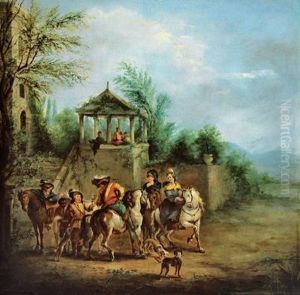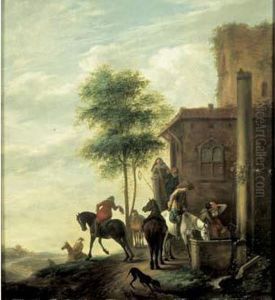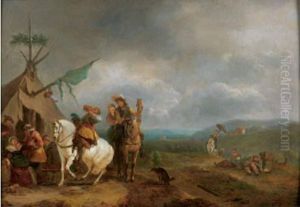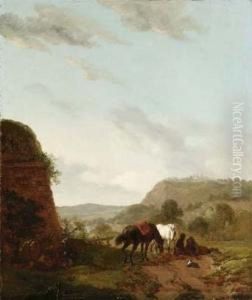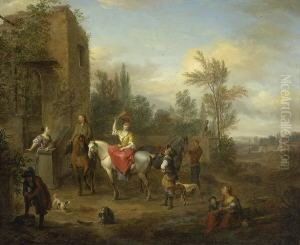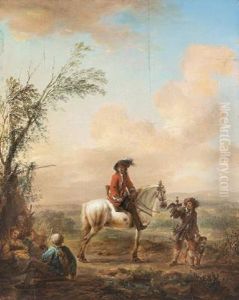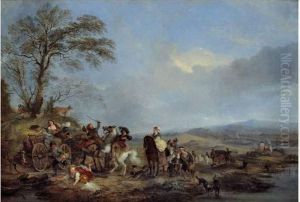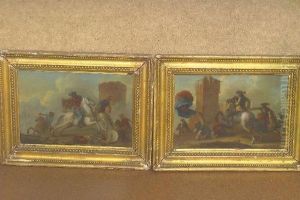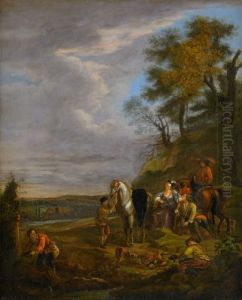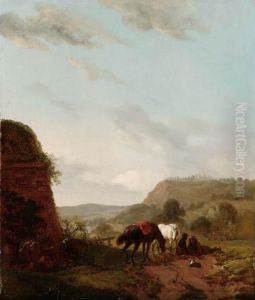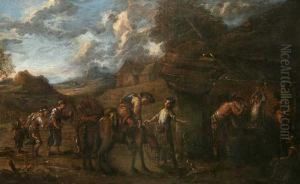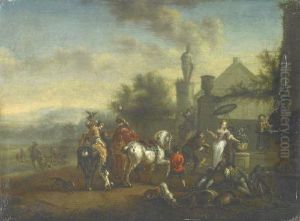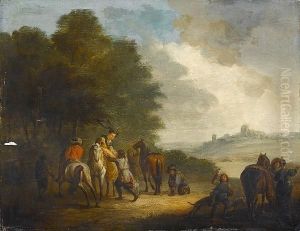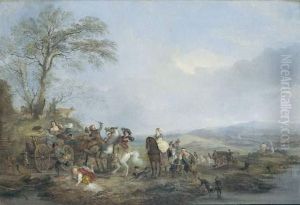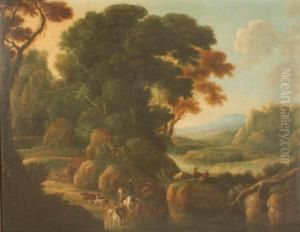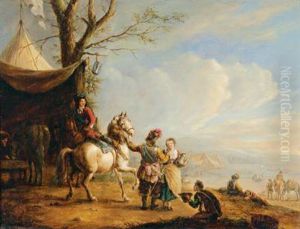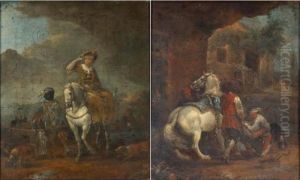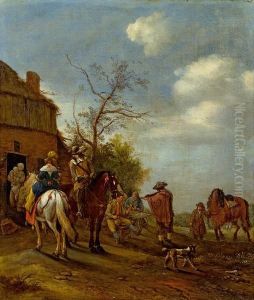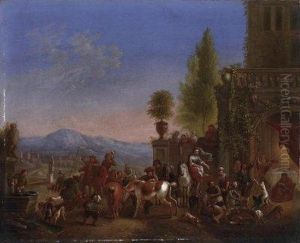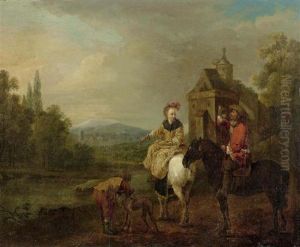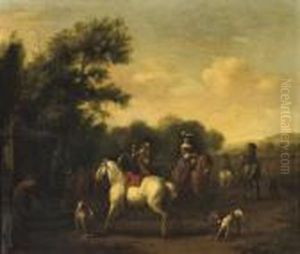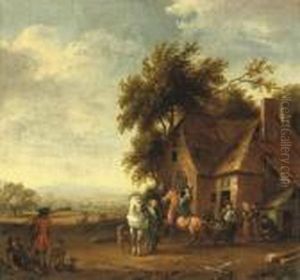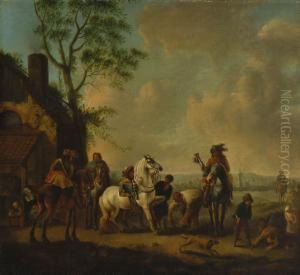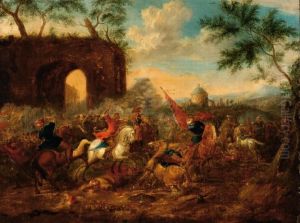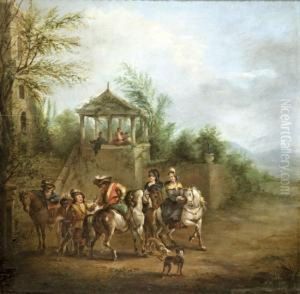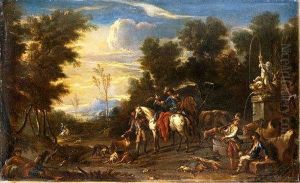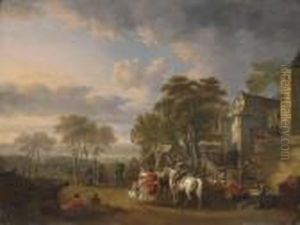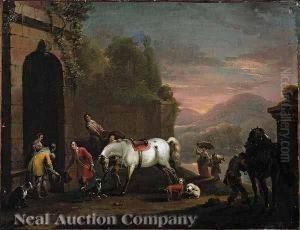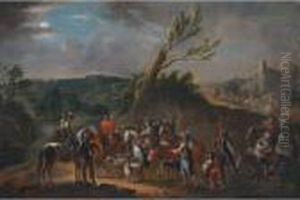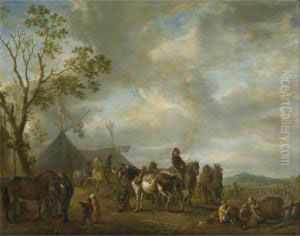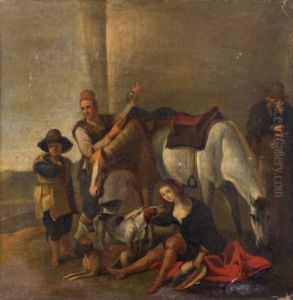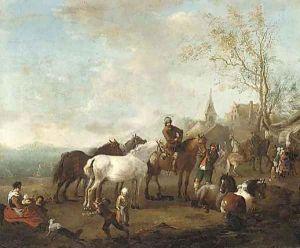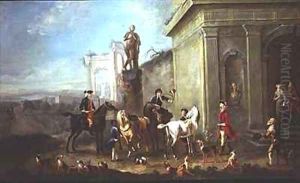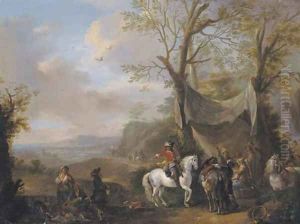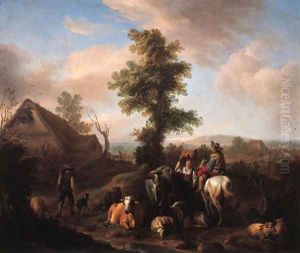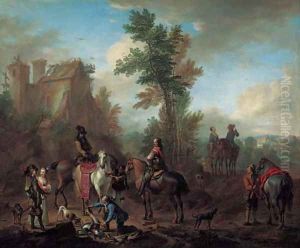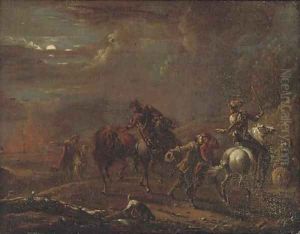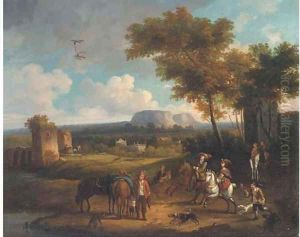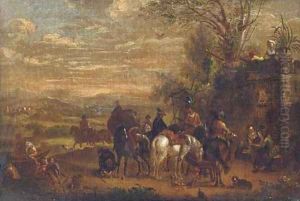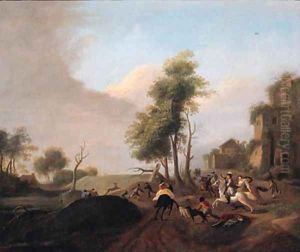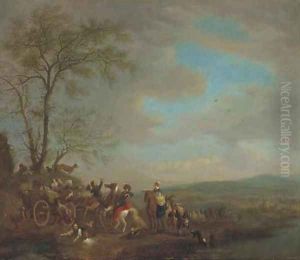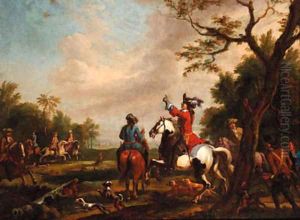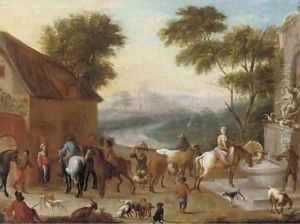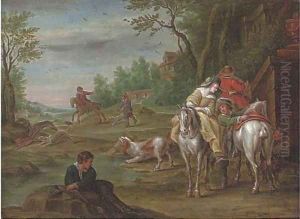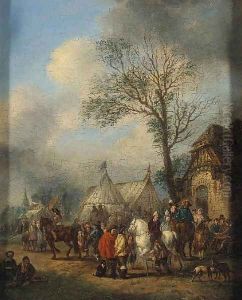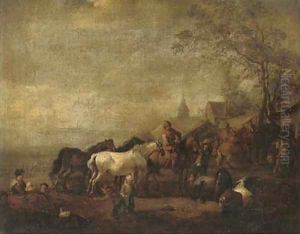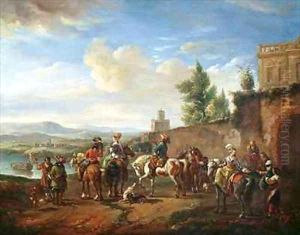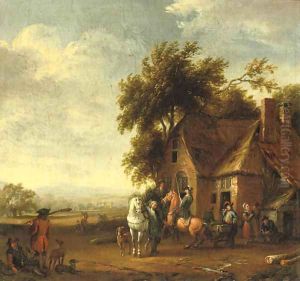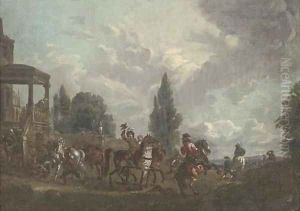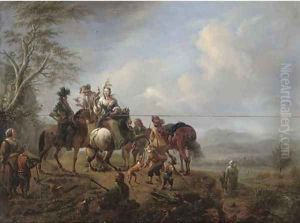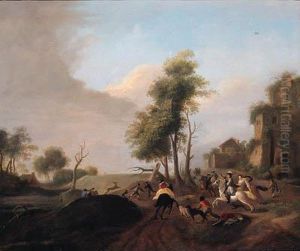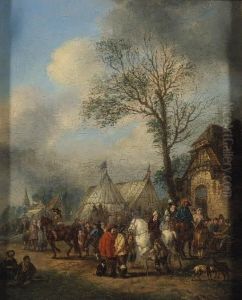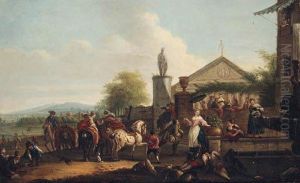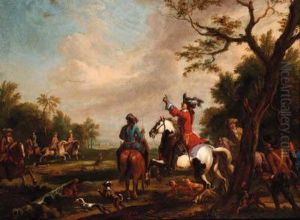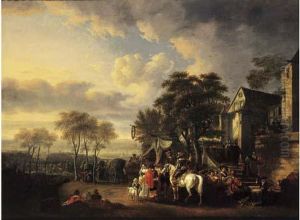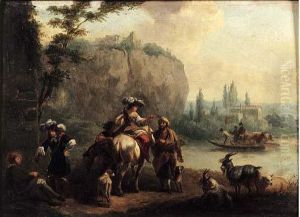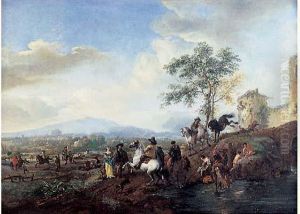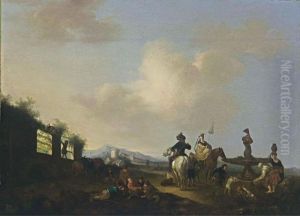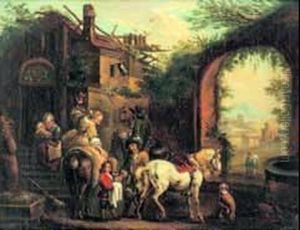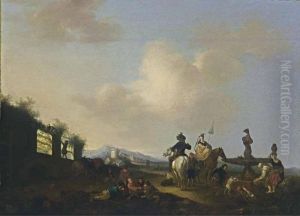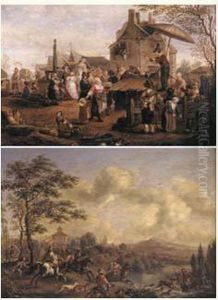Carel van Falens or Valens Paintings
Carel van Falens, also known as Carel van Valens, was a Flemish painter who specialized in hunting scenes, landscapes, and genre paintings that often depicted outdoor activities. Born in 1683 in Antwerp, he was part of a family of artists and was trained by his father, who was also a painter.
Falens showed a remarkable talent for capturing the dynamism and elegance of the aristocratic hunt, a popular subject among the wealthy patrons of his time. His ability to depict horses and dogs in action, along with his detailed rendering of the lush landscapes, made his work sought after for its vitality and realism.
In his early career, he became a member of the Guild of St. Luke in Antwerp, which was a typical step for artists of the era. Seeking to enhance his career and find new patrons, Falens travelled to Paris. His work was well received, and he eventually caught the attention of French nobility, which led to commissions that helped to solidify his reputation.
Falens spent a significant part of his career in France, where he was influenced by the works of contemporary French artists and the grandeur of the French court. His paintings began to reflect a combination of Flemish attention to detail and the French taste for elegant compositions.
Throughout his life, Falens continued to evolve as an artist, embracing various influences and refining his technique. His work serves as an example of the cross-cultural artistic exchanges in the Baroque period and provides a window into the leisure activities of the European elite during the 18th century.
Carel van Falens’ legacy includes a number of works that can be found in art galleries and private collections around the world. He passed away in 1733, leaving behind a body of work that continues to be appreciated by art historians and enthusiasts for its vivid portrayal of hunting scenes and its capture of the spirit of his time.
